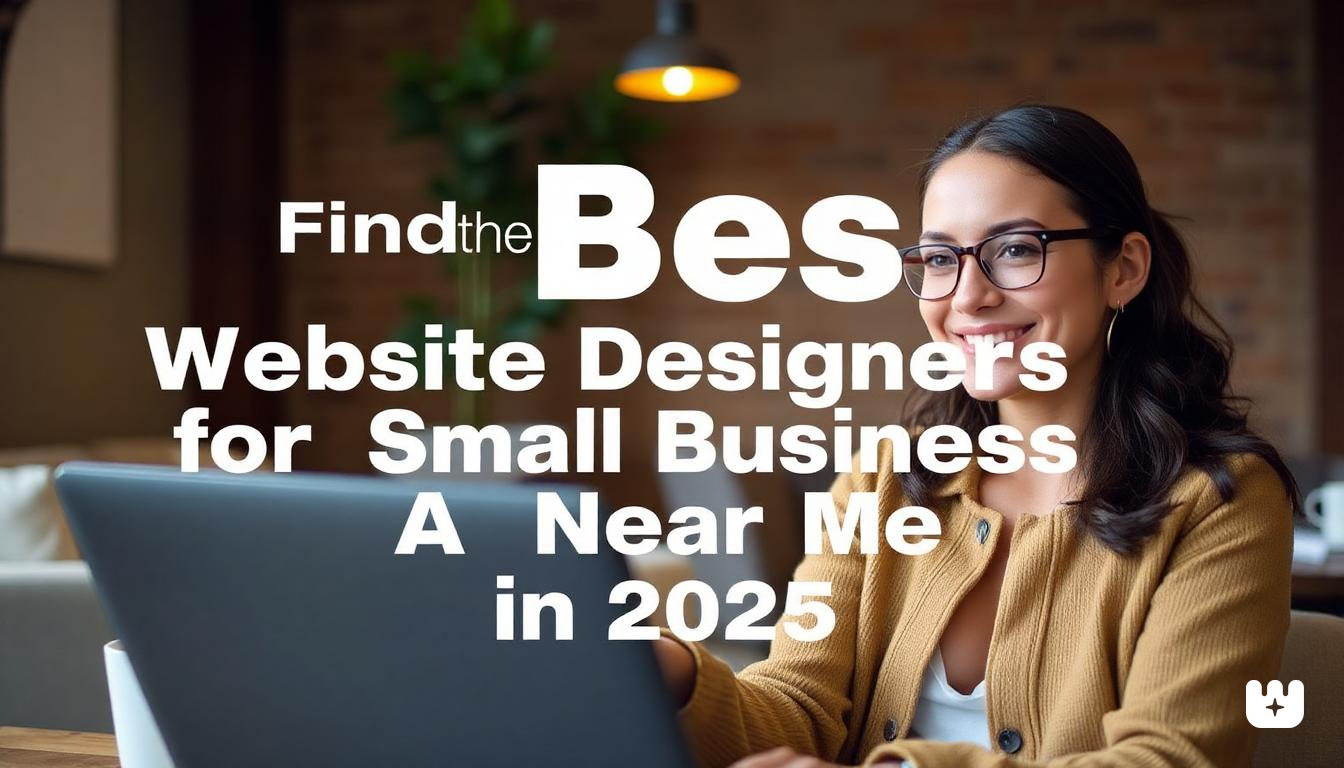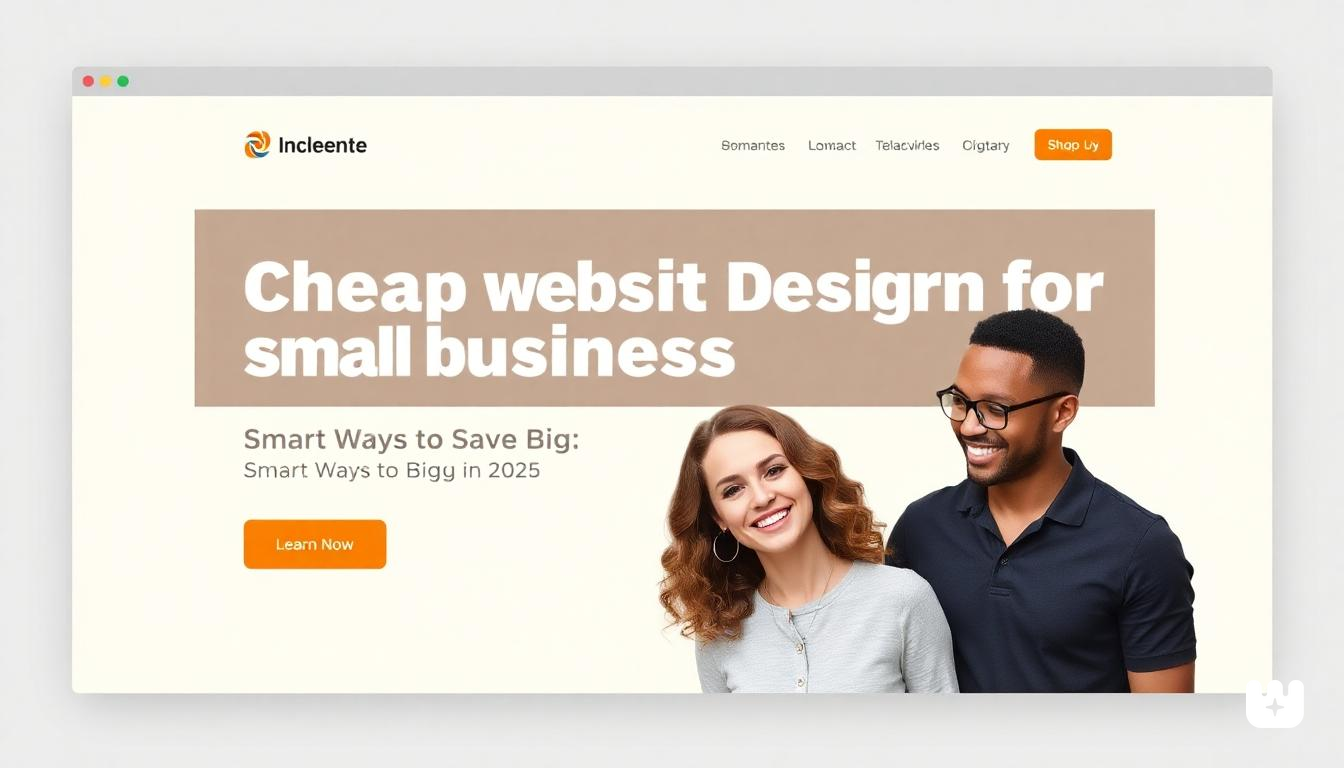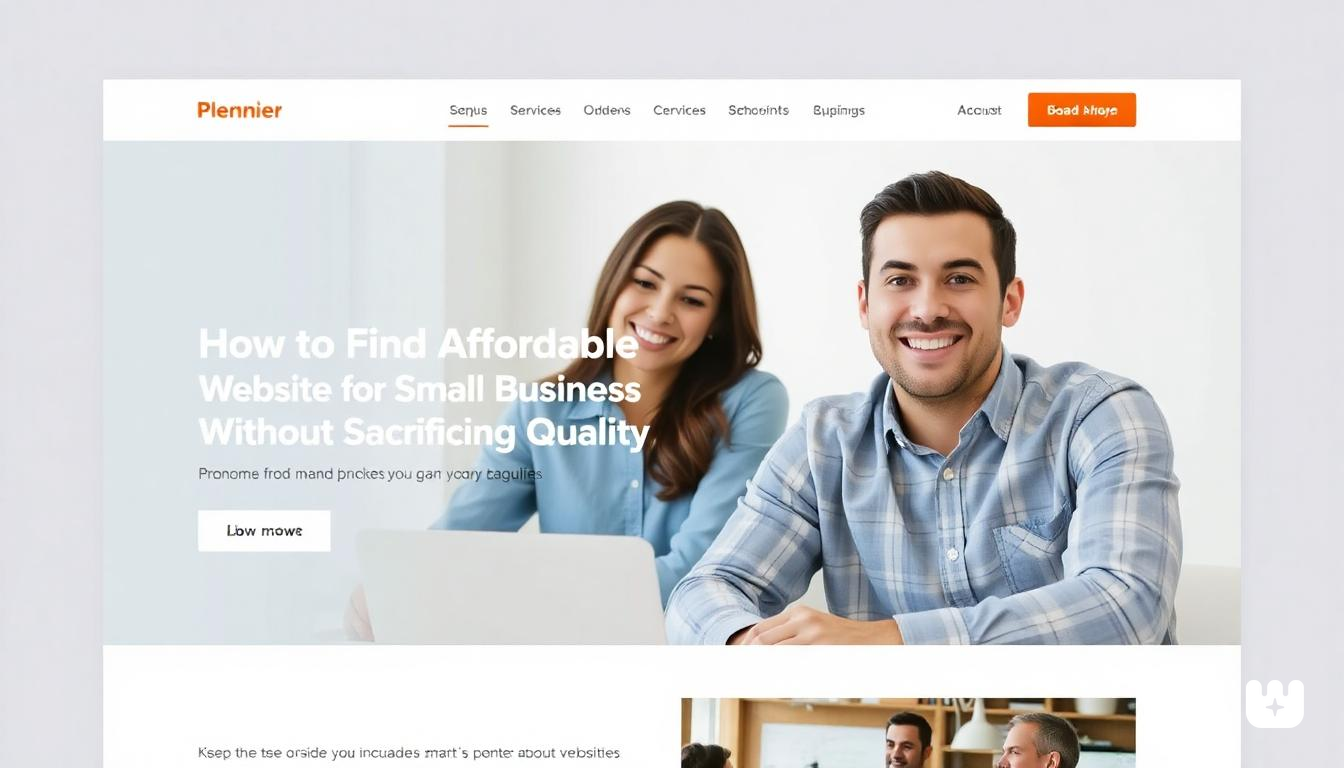In today's digital landscape, your website banner design can make or break that crucial first impression. As we navigate through 2025, website banners have evolved from simple decorative elements to strategic conversion tools that guide visitor behavior and communicate brand value in seconds.
Whether it's a bold hero image welcoming visitors to your homepage or a targeted promotional banner announcing your latest offer, effective banner design combines visual appeal with strategic messaging to drive engagement and conversions.
For small businesses competing in crowded markets, mastering website banner design has become an essential skill that directly impacts bottom-line results.
What Makes a Banner Design Effective?
Creating a banner that not only catches the eye but also drives action requires understanding several key design principles. The most effective website banner designs balance aesthetic appeal with strategic functionality.
Visual Hierarchy
Visual hierarchy determines where your visitor's eyes go first, second, and third when viewing your banner. In effective website banner design:
- The most important element (typically your headline or value proposition) should command immediate attention
- Supporting elements should guide the eye in a logical flow toward your call to action
- Negative space strategically directs focus to key elements rather than creating visual clutter
Successful graphic design web design professionals use size, color, contrast, and positioning to create visual hierarchies that intuitively guide users through banner content.
Color Theory and Branding
Color choices in banner design are never arbitrary. They should:
- Reflect your brand identity and reinforce brand recognition
- Create emotional resonance with your target audience
- Provide sufficient contrast for readability
- Direct attention to call-to-action elements
Studies show that color can increase brand recognition by up to 80%, making your color selection a critical component of effective banner design. Businesses with established creative logo design elements should ensure banner colors align with their existing visual identity.
Fonts and Readability
Typography plays a crucial role in banner effectiveness:
- Limit yourself to 1-2 font families per banner
- Ensure headlines are easily readable at a glance (typically 24pt or larger)
- Maintain sufficient contrast between text and background
- Choose fonts that align with your brand personality
Remember that in 2025's mobile-first world, fonts must remain readable across various screen sizes. Digital graphic design best practices recommend testing readability across multiple devices before finalizing any banner design.
Mobile Responsiveness
With mobile traffic continuing to dominate in 2025, responsive banner design is non-negotiable:
- Design with mobile viewing as your primary consideration
- Ensure text remains readable without zooming
- Simplify messaging for smaller screens
- Test how banners appear across various devices and orientations
Many website banner design failures stem from desktop-first thinking that neglects how banners will render on mobile devices. The most successful banners maintain their impact regardless of the viewing device.
Website Banner Types and When to Use Them
Different banner types serve distinct strategic purposes on your website. Understanding when to deploy each type maximizes their effectiveness.
Hero Banners
Hero banners are the large, prominent banners that appear at the top of your homepage and key landing pages. They typically span the full width of the screen and make the first visual impression on visitors.
Best used for:
- Communicating your primary value proposition
- Setting the tone and aesthetic of your brand
- Introducing new visitors to your core offering
In 2025, interactive hero banners with subtle animations or micro-interactions have proven particularly effective at increasing engagement metrics. However, these elements should enhance your message rather than distract from it.
Promotional Banners
Promotional banners highlight specific offers, sales, or limited-time opportunities. They're typically more compact than hero banners and may appear throughout your site.
Best used for:
- Limited-time offers and seasonal promotions
- New product or service announcements
- Special events or exclusive opportunities
Effective promotional banners create urgency without appearing desperate. They should clearly communicate the value proposition and timeframe of your offer while maintaining your brand's visual identity.
Call-to-Action Banners
CTA banners are designed specifically to drive a single, focused action from your visitors.
Best used for:
- Newsletter signups
- Free trial or demo requests
- Directing traffic to key landing pages
- Encouraging downloads of resources
The most effective CTA banners in 2025 use personalization to increase relevance, displaying different messaging based on visitor behavior, geography, or other segmentation criteria.
Social Media or Announcement Banners
These smaller, more discrete banners typically appear in headers, footers, or sidebars to communicate timely information.
Best used for:
- Highlighting social media channels
- Announcing operational updates
- Promoting upcoming events
- Sharing recent achievements or news
While less prominent than other banner types, these announcements help keep your site feeling current and encourage cross-channel engagement.
Tools and Platforms to Create Stunning Banners
The right banner design tools can dramatically streamline your creation process while ensuring professional results.
User-Friendly Design Platforms
For small business owners without extensive design experience, these platforms offer the fastest path to professional banner creation:
- Canva - Offers hundreds of customizable banner templates with a drag-and-drop interface
- Adobe Express - Provides premium templates with easy customization options
- Crello - Features animation capabilities for dynamic banners
These platforms have evolved significantly in 2025, with improved AI-assisted design features that help suggest optimal layouts and color combinations based on your brand assets.
Professional Design Software
For more customized results or businesses with in-house design capabilities:
- Adobe Photoshop - Remains the industry standard for image-rich banner creation
- Figma - Offers collaborative design capabilities ideal for teams
- Sketch - Popular among designers for its intuitive interface and extensive plugin ecosystem
The learning curve for these tools is steeper, but they provide greater flexibility and precision for banner design.
Free vs. Paid Tools
Budget considerations will influence your tool selection:
Free tools advantages:
- No upfront investment
- Sufficient for basic banner needs
- Often include usable templates
Paid tools advantages:
- More sophisticated design capabilities
- Better asset libraries and typography options
- Advanced features like animation and interactive elements
- Better integration with other marketing tools
Most small businesses find that a combination approach works best—using free tools for simple banners and investing in professional design for high-impact hero banners and major campaign assets.
Templates vs. Custom Design
When deciding between templates and custom designs:
Template advantages:
- Fast implementation
- Professional layouts
- Consistent structure
- Cost-effective
Custom design advantages:
- Unique visual identity
- Precise alignment with brand guidelines
- Optimized for specific conversion goals
- Differentiation from competitors
Many successful small businesses start with templates and gradually transition to more customized designs as they identify their highest-performing banner strategies.
Best Practices for Small Business Banners
Implementing these proven best practices will improve your banner performance metrics and conversion rates.
Keep It Simple But Bold
The most effective website banner design follows the principle of strategic simplicity:
- Focus on a single, clear message per banner
- Use bold, high-contrast visuals that capture attention
- Include only essential text elements
- Eliminate any elements that don't directly support your core message
According to HubSpot, visitors typically decide whether to engage with your site within 3-5 seconds of arrival. Your banners must communicate their value instantly within this limited attention window.
Align with Brand Identity
Consistency builds trust and recognition. Your website banner design should be an extension of your overall visual identity:
- Use colors from your established palette
- Incorporate your logo thoughtfully
- Maintain consistent typography
- Reflect your brand's personality in imagery and tone
For more guidance on developing a cohesive brand identity, check out our article on Branding Designers: Why Your Small Business Needs One in 2025.
Strategic Color Selection
Colors in banner design should serve strategic purposes:
- Use your primary brand color for recognition
- Apply accent colors to highlight key elements
- Consider color psychology for emotional impact
- Ensure sufficient contrast for text legibility
Remember that color perception can vary across devices, so test your banners on multiple screens before finalizing.
Compelling Call-to-Action
Every banner should include a clear, action-oriented CTA:
- Use action verbs that inspire immediate response
- Create visual distinction for CTA buttons
- Position CTAs where they naturally complete the visual journey
- Test different CTA phrasings to identify highest performers
In 2025, personalized CTAs that reflect visitor behavior or preferences have shown conversion rates up to 202% higher than generic CTAs.
Mobile-First Design Approach
With mobile traffic dominating in 2025, designing banners with mobile viewing as your primary consideration is essential:
- Start your design process at mobile dimensions
- Scale up to larger screens rather than down
- Test touch interactions on actual devices
- Ensure text remains readable without zooming
For more comprehensive guidance on mobile-responsive design, visit our guide on Affordable Web Design for Small Businesses.
Common Mistakes to Avoid in Banner Design
Even well-intentioned banner designs can fall short due to these common pitfalls.
Overloading with Text
Text-heavy banners consistently underperform because:
- Visitors rarely read banner text in its entirety
- Dense text creates visual intimidation
- Key messages get lost in the clutter
- Mobile rendering makes excessive text unreadable
Limit your banner text to a compelling headline, 1-2 supporting points, and a clear CTA for maximum impact.
Poor Image Quality
Image issues that undermine banner effectiveness include:
- Low-resolution photos that appear pixelated
- Generic stock photos that feel inauthentic
- Poorly cropped images that distract from your message
- Images that clash with your brand aesthetic
Invest in high-quality imagery—either through professional photography or premium stock resources—to maintain a polished, trustworthy impression.
Non-Clickable or Misleading Banners
Functionality issues frustrate users and increase bounce rates:
- Banners that appear interactive but aren't clickable
- Clickable areas that are too small for easy interaction
- Banners leading to irrelevant landing pages
- Missing or misleading CTAs
Each banner should have a clear purpose and deliver on its implied promise when engaged.
Inconsistent Branding
Branding disconnects create confusion and undermine trust:
- Banners that don't match your website's overall design
- Inconsistent typography across different banners
- Conflicting color schemes or visual styles
- Messaging that contradicts your brand voice
Maintain visual consistency by creating a banner design system that aligns with your overall brand guidelines.
Advanced Banner Design Strategies for 2025
To stay ahead of competitors, consider these emerging banner design approaches that have proven effective in 2025.
Interactive Elements and Micro-Animations
Subtle motion and interactive elements have become powerful engagement tools:
- Hover effects that respond to user interaction
- Subtle animations that guide attention
- Progressive reveals that tell a visual story
- Interactive elements that invite engagement
The key is moderation—animations should enhance your message rather than distract from it.
Personalization and Dynamic Content
Banners that adapt to visitor characteristics show dramatically improved performance:
- Location-based messaging
- Returning visitor recognition
- Behavior-based content suggestions
- Interest-specific imagery
Using your website's analytics and personalization capabilities to tailor banner content creates more relevant user experiences.
A/B Testing for Optimization
The most successful banner strategies emerge from consistent testing:
- Test one variable at a time (headline, image, CTA, etc.)
- Run tests with statistically significant traffic volumes
- Measure engagement metrics beyond just clicks
- Apply insights across your banner portfolio
Continuous optimization based on actual user behavior will outperform even the most informed design assumptions.
Measuring Banner Design Success
Effective banner design requires measuring performance against concrete metrics:
- Click-through rate (CTR) - The percentage of visitors who click your banner
- Conversion rate - The percentage of banner clicks that complete your desired action
- Engagement time - How long visitors interact with the page containing your banner
- Heatmap analysis - Visual representation of where visitors focus attention
- Return on investment - Comparing banner performance to design costs
In 2025, comprehensive analytics packages have made these measurements accessible even for small businesses with limited technical resources.
Conclusion
As we've explored throughout this guide, effective website banner design combines art and science to create visual elements that not only attract attention but drive meaningful business results. In 2025's competitive digital landscape, banners have evolved beyond decorative elements to become strategic conversion assets that communicate brand value and guide visitor behavior.
The most successful small businesses approach banner design thoughtfully—aligning visuals with brand identity, crafting compelling messaging, ensuring mobile responsiveness, and continuously optimizing based on performance data. Whether you're creating banners yourself using the tools we've discussed or partnering with a professional designer, the principles outlined here will help ensure your banners contribute meaningfully to your business goals.
Remember that banner design is not a one-time effort but an ongoing process of refinement. As visitor expectations, design trends, and your business offerings evolve, your banner strategy should adapt accordingly. By treating your website banner design as a dynamic, conversion-focused element of your overall marketing strategy, you'll create more engaging user experiences that translate directly to business growth.
Ready to take your website performance to the next level? Start by reviewing your current banners against the best practices we've outlined, and identify opportunities to implement the strategies that align with your specific business goals.


